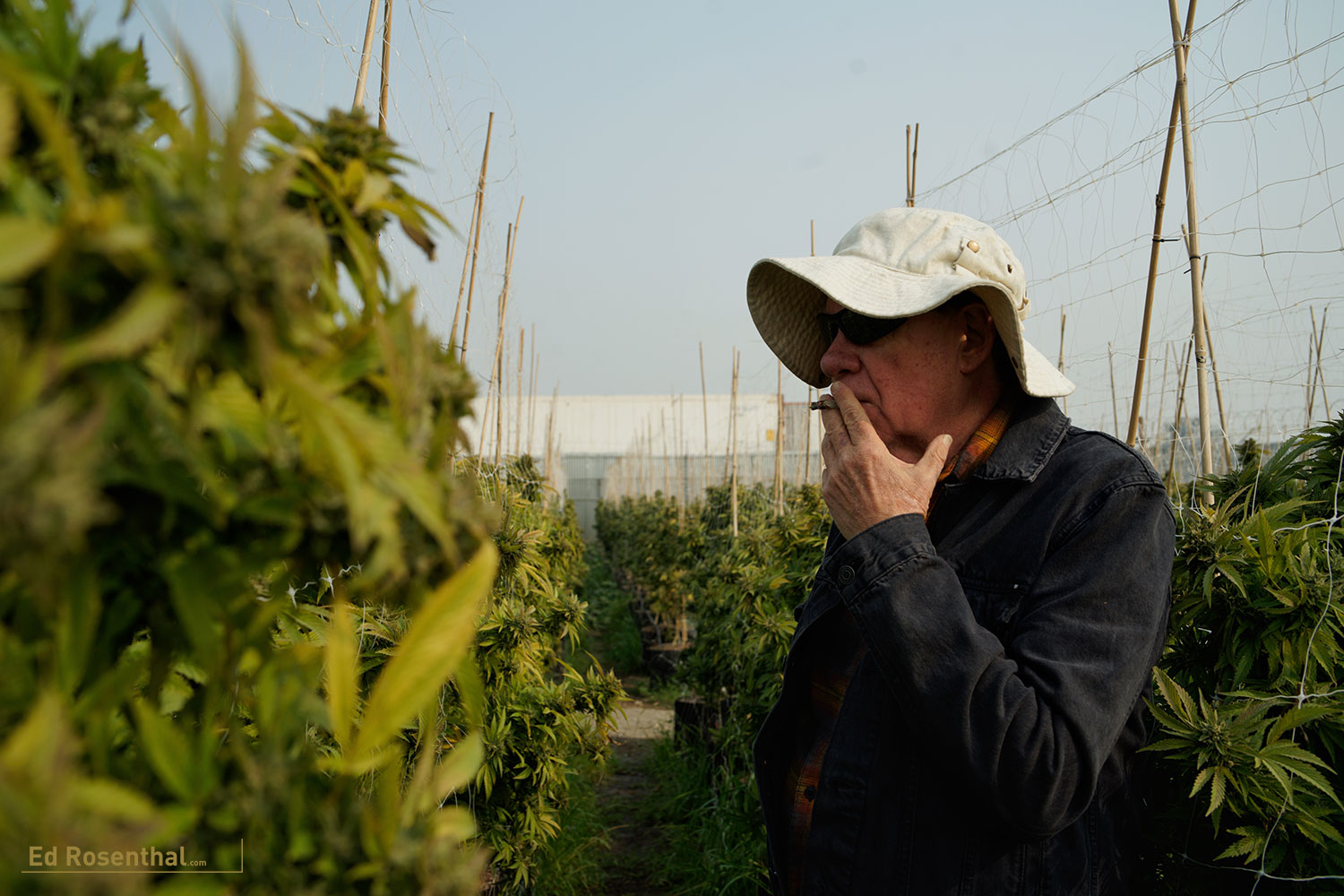New Year’s Resolution #1: Improve Your Cannabis Harvesting
Ed Rosenthal photo by Lizzy Fritz
Those who know me, know I am passionate about all aspects of cannabis growing. I want my readers to grow and enjoy the best bud possible! But you might not know, I’m also passionate about cannabis-related resolutions. Every grower can improve their process and product if they commit to it. No two growing seasons are exactly alike; even expert growers must consider their plan of attack each season. In my 4-part series this month, I give growers cannabis-related resolutions to consider in the new year. Ultimately, I hope to challenge us all to consider: How can you improve your grow?
New Year’s Resolution #1: Improve Your Cannabis Harvesting Technique
SPARC medium scale greenhouse winter harvest for oil. Photo by David Downs.
We are at the dawn of cannabis as a modern crop science. Cannabis cultivation—and harvesting in particular—is evolving from a folk art to an agricultural field. Hundreds of papers are waiting to be written about topics like optimal terpene preservation and chemical changes associated with flushing.
I’ve studied prior research, conducted controlled experiments, communicated with researchers and went all over the country interviewing cultivators and working to systematize this knowledge.
A good crop followed by a poor harvest is as disastrous as crop failure. It’s post-crop failure.
With legalization comes the erasure of cannabis’ once-fat profit margins, and the rise of intense competition, on price, cleanliness, quality and uniqueness. Commercial growers must continue optimizing their processes; that dynamic will only benefit consumers. As for growing it yourself - you’ll find it more rewarding, with cheaper, cleaner, better-tasting homegrown.
Harvesting: Why is it so Important?
A large scale flowering room before harvest. Photo by David Downs.
Harvesting, drying, curing and storing are incredibly important processes for growers. Each contributes to the final quality of the flowers. A good crop followed by a poor harvest is as disastrous as crop failure. It’s post-crop failure.
The Evolution of Harvesting
Growers usually plan their gardens in great detail by setting timetables and cultivation parameters for their plants and bringing the plants to the peak of maturity. However, they often spend a lot less time planning the harvest.
If buds aren’t processed correctly, a perfectly good crop can be destroyed.
Even large commercial operations are sometimes far behind in harvest and post-harvest operations. These final tasks need the most thought; they are the ones most likely to be improperly executed—but they needn’t be. With proper preparation the process can flow seamlessly.
Divide up tasks so there are few bottlenecks
SPARC medium scale greenhouse winter harvest for oil. Photo by David Downs.
Whether you are a sole practitioner or putting together a harvest team, try to divide up the tasks so there are few bottlenecks. The task flow can be divided in many ways. For instance, if a grower has access to an area to store branches or colas but insufficient trimming facilities, they ought to prioritize bringing in the buds and pulling off fan leaves. The colas can be placed in storage to dry before trimming or under refrigeration to keep them fresh for wet trimming. Then the material can be manicured over a longer period of time.
No matter what the situation, plan ahead and prepare for the coming harvest.
The harvest consists of several tasks:
Medium scale outdoor grow for CBD oil at Soquel Farms. Photo by David Downs.
■ Cutting the colas from the plants
■ Cutting the buds from the branches
■ Trimming the buds
■ Drying the buds
Prepare for each stage of harvest
Commercial cannabis drying space. Photo by Rick Horn.
In many cases, even on large farms, not much has changed over the years. Growers tend to get set in their ways; their gardens are easily dated by the techniques they employ. Not all growers realize new equipment is available to increase efficiency and cut down on the manual labor associated with the harvest.
If buds aren’t processed correctly, a perfectly good crop can be destroyed. Proper harvesting includes keeping the buds clean and fresh and preserving flavors and aromas.
It’s imperative to plan ahead, know the bottlenecks and schedule accordingly.
Marijuana’s freshness is based on two factors: maintaining enough moisture in the material for it to be pliable without inviting mold and, just as important, retaining the terpenes found in the trichomes. The terpenes are volatile oils that evaporate at different temperatures, some of them as low as 68° F (20° C). For this reason, at no time during the drying and curing process should the temperature be raised very much above this point.
Before it is consumed, marijuana is judged first by appearance and then by smell. Fresh, aromatic buds are the most likely to be in high demand. This article, “When Are Buds Ready to Harvest” will show you the best methods and latest technologies not only to properly harvest your marijuana garden, but also to finish the job right.
It’s imperative to plan ahead, know the bottlenecks and schedule accordingly but, most importantly, as a grower, it is important to know what you are doing and why.
Next week – Part 2 of 4: “New Year’s Resolution #2: Spring Planting Preparation
Learn how to #GROWYOUROWN
Beyond Buds, Next Generation & Marijuana Grower’s Handbook
The official course books at Oaksterdam University







